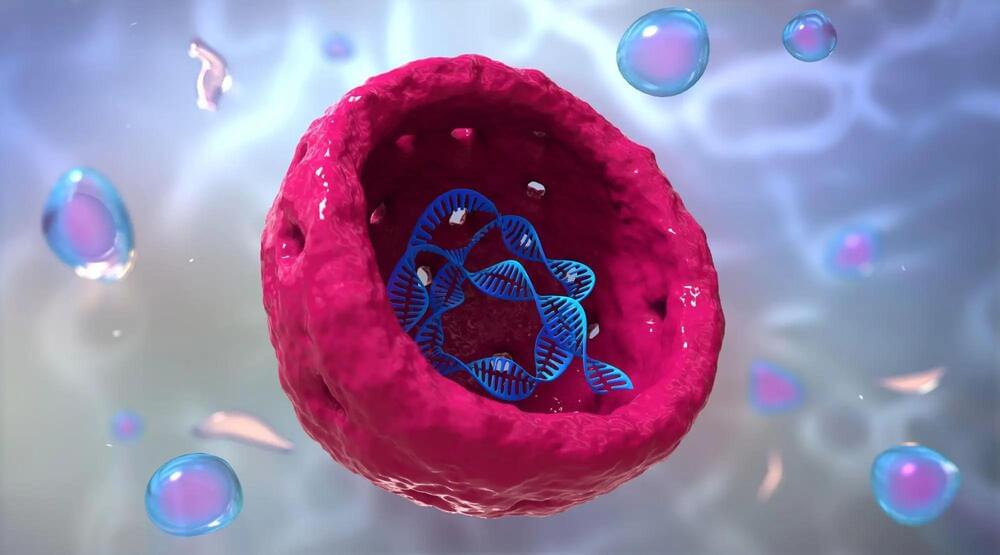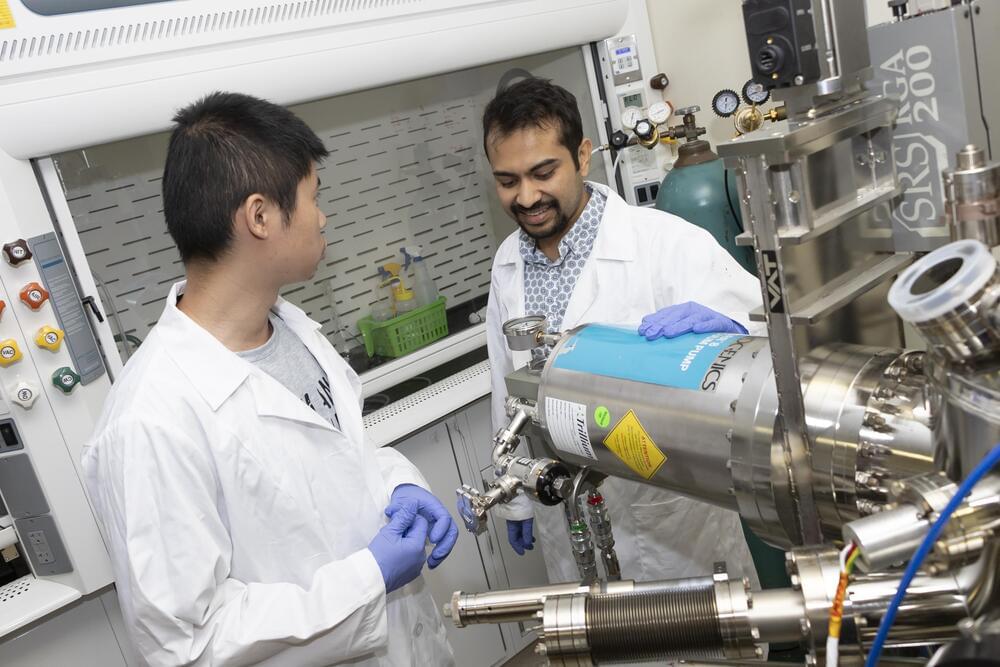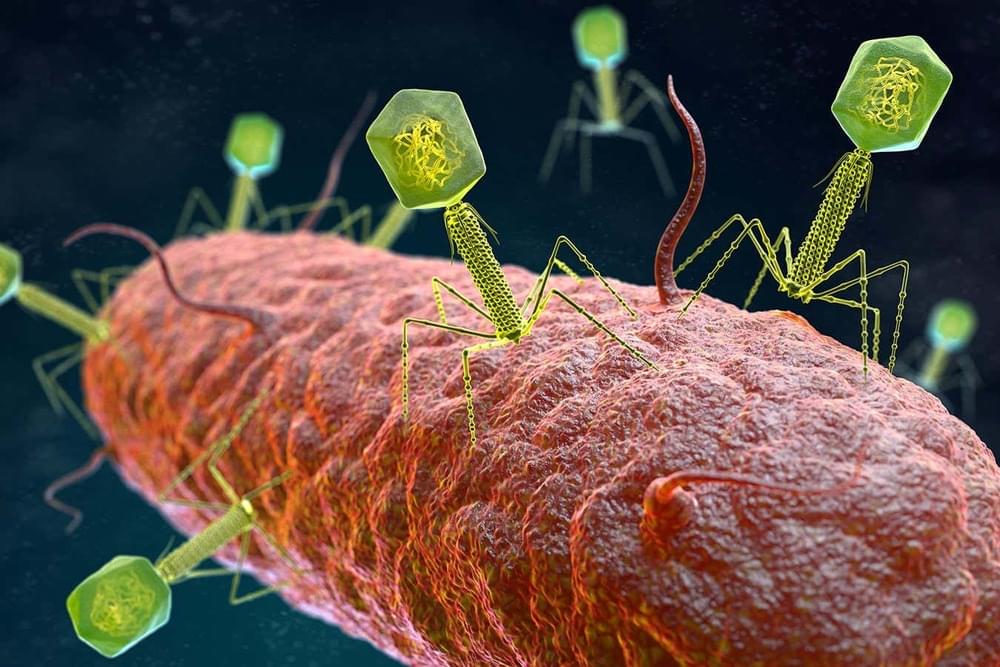Simple heterojunction combines many functions in a single component.



Life runs on ribosomes. Every cell across the globe requires ribosomes to convert genetic data into the vital proteins required for the organism’s operation, and, subsequently, for the production of more ribosomes. However, scientists still lack a clear understanding of how these essential nanomachines are assembled.
Now, new high-resolution images of the large ribosomal subunit are shedding light on how arguably nature’s most fundamental molecule coalesces in human cells. The findings, published in Science, bring us one step closer to a complete picture of ribosome assembly.
“We now have a pretty good idea of how the large ribosomal subunit is assembled in humans,” says Rockefeller’s Sebastian Klinge. “We still have quite a few gaps in our understanding, but we certainly now have a much better idea than we had before.”
Subscribe here: https://goo.gl/9FS8uF
Check out the previous episode: https://www.youtube.com/watch?v=X5lpOskKF9I
Become a Patreon!: https://www.patreon.com/ColdFusion_TV
Here it is, the bio computer. A new type of parallel computing method that could rival the infamous quantum computer at a much lower price while being more practical to boot.
Hi, welcome to ColdFusion (formally known as ColdfusTion).
Experience the cutting edge of the world around us in a fun relaxed atmosphere.
Sources:
http://www.mind.ilstu.edu/curriculum/nature_of_computers/computer_types.php.

A promising, more durable fuel cell design could help transform heavy-duty trucking and other clean fuel cell applications. Consisting of nanowires that are less susceptible to corrosion than other designs, the innovative electrode—the heart of a polymer electrolyte-membrane fuel cell—could usher in a new era for fuel cells, which use hydrogen as emission-free power for vehicles.
“In real-world terms, this means that we can have a more durable fuel cell that will provide high fuel economy over a longer lifetime,” said Jacob Spendelow, a scientist with the Los Alamos National Laboratory team that described its results in the journal Advanced Materials. “This work demonstrates that we can get rid of conventional carbon-based catalyst supports, eliminating the degradation problems associated with carbon corrosion, while still achieving high fuel cell performance.”
The improved durability makes this fuel cell a promising candidate for use in heavy-duty trucking applications, which require fuel cell lifetimes of more than 25,000 hours.
Researchers at Los Alamos National Laboratory have successfully developed a new way to produce a specific type of photon that could prove critical for quantum data exchange, notably encryption. The specific kind of photons, called “circularly polarized light,” have thus far proved challenging to create and control, but this new technique makes the process easier and, importantly, cheaper. This was achieved, the team explains, by stacking two different, atomically thin materials to “twist” (polarize) photons in a predictable fashion.
Encoded, “twisted,” photons
“Our research shows that it is possible for a monolayer semiconductor to emit circularly polarized light without the help of an external magnetic field,” explained Han Htoon, a scientist at Los Alamos National Laboratory. “This effect has only been achieved before with high magnetic fields created by bulky superconducting magnets, by coupling quantum emitters to very complex nanoscale photonics structures, or by injecting spin-polarized carriers into quantum emitters. Our proximity-effect approach has the advantage of low-cost fabrication and reliability,” he added.

Goldbeating, an age-old craft pioneered by ancient Egyptian artisans more than five millennia ago, involves the meticulous thinning of bulk gold into gossamer-like leaves. Throughout history, this intricate process has adorned various masterpieces, such as the tombs of Thebes and Saqqara, and has cemented its place in art and adornments across cultures. Today, nanoscale gold is used not only for decorating fancy desserts, but is indispensable for modern applications ranging from microelectronics to nanomedicine.

Researchers have discovered that graphene.
Graphene is an allotrope of carbon in the form of a single layer of atoms in a two-dimensional hexagonal lattice in which one atom forms each vertex. It is the basic structural element of other allotropes of carbon, including graphite, charcoal, carbon nanotubes, and fullerenes. In proportion to its thickness, it is about 100 times stronger than the strongest steel.

The discovery overturns more than a century of physics orthodoxy by identifying a new form of energy that can be extracted from ambient heat using graphene.
Graphene is an allotrope of carbon in the form of a single layer of atoms in a two-dimensional hexagonal lattice in which one atom forms each vertex. It is the basic structural element of other allotropes of carbon, including graphite, charcoal, carbon nanotubes, and fullerenes. In proportion to its thickness, it is about 100 times stronger than the strongest steel.

Regrowing the cells of the human retina on a scaffold of synthetic, tissue-like material showed substantial improvements over previously used materials such as cellulose, and the scientists hope they can move on to testing their method in the already blind.
Macular degeneration is increasing in prevalence in the developed world. It’s the leading cause of blindness and is caused by the loss of cells in a key part of the eye called the retina.
Humans have no ability to regrow retinal pigment cells, but scientists have determined how to do it in vitro using pluripotent stem cells. However as the study authors describe, previous examples of this procedure saw scientists growing the cells on flat surfaces rather than one resembling the retinal membrane.

It can be time consuming to test food and drink for potentially harmful bacteria, but viruses that naturally attack the bacteria can be gene edited to speed up the process.